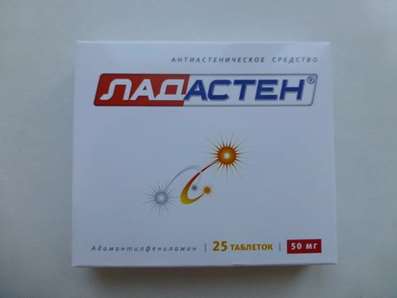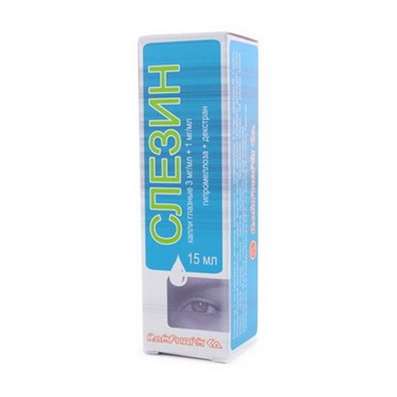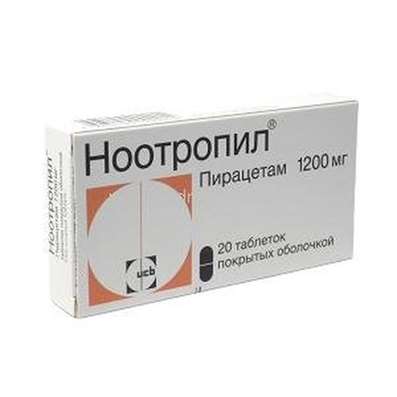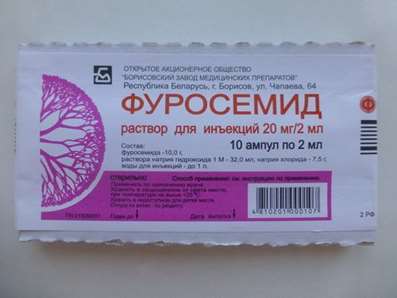Instruction for use: SeptaNazal
I want this, give me price
Active substance Xylometazoline + Dexpanthenol
ATX Code R01AB06 xylometazoline in combination with other drugs
Pharmacotherapeutic group:
Nasal treatment for [alpha-adrenoceptor agonists in combination]
Nose treatment for diseases [decongestant in combination]
The nosological classification (ICD-10)
H66.9 Otitis media, unspecified
Chronic otitis, Otitis, otitis media, middle ear infections, Otitis media in children
J00 Acute nasopharyngitis [runny nose]
Viral rhinitis, Inflammation of the nasopharynx, Inflammatory diseases of the nose, purulent rhinitis, Nasal congestion, Nasal congestion with colds and flu, The difficulty of nasal breathing, The difficulty of nasal breathing for colds, Difficulty in nasal breathing, Difficulty in nasal breathing in colds, nasal, hypersecretion, cold, ARI with rhinitis phenomena, coryza, Acute rhinitis of various origins, Acute rhinitis with thick purulent mucous exudate, Acute nasopharyngitis, Swelling of the mucosa of the nasopharynx, Rhinitis, rhinorrhea, Infectious-inflammatory diseases of ENT organs, heavy cold, rhinopharyngitis, nasopharyngitis
J01 Acute sinusitis
Inflammation of the sinuses, Inflammatory diseases of the paranasal sinuses, Purulent inflammation of the paranasal sinuses, Infectious-inflammatory diseases of ENT organs, Infection of the sinuses, Combined sinusitis, Exacerbation of sinusitis, Acute inflammation of the paranasal sinuses, Acute bacterial sinusitis, Acute sinusitis in adults, Subacute sinusitis, acute Sinusitis, sinusitis
J06 Acute upper respiratory infections of multiple and unspecified
Frequent colds viral diseases, Infections of the upper respiratory tract, Acute respiratory disease influenza character, for colds Pain, Acute colds,Cold, respiratory infection,Seasonal colds, Pain in infectious and inflammatory diseases of the upper respiratory tract, Bacterial infections of the upper respiratory tract, Bacterial respiratory infections, Viral disease of the respiratory tract, Viral respiratory tract infections, Inflammatory disease of the upper respiratory tract, Inflammation of the upper respiratory tract disease, Inflammation of the upper respiratory tract illness with difficult sputum, Inflammatory airway disease, Secondary infections with colds, Shortness of sputum in acute and chronic respiratory diseases, Upper respiratory tract infection, Infections of the upper respiratory tract, Respiratory Tract Infections, Infections of the respiratory tract and lungs, Infectious-inflammatory diseases of the upper respiratory tract, Infectious-inflammatory diseases of the upper respiratory tract and ENT-organs, Infectious-inflammatory diseases of the upper respiratory tract in children and adults, Infectious-inflammatory diseases of the upper respiratory tract, Infectious inflammation of the airways,respiratory infection, Qatar upper respiratory tract, Catarrh of the upper respiratory tract, Catarrhal disease of the upper respiratory tract, Catarrhal symptoms of the upper respiratory tract, Coughing with a cold, SARS, ARI, ARI with rhinitis phenomena, Acute respiratory infection, Acute infectious and inflammatory disease of the upper respiratory tract, Acute respiratory disease, Sore throat or nose, Respiratory viral infections, Respiratory diseases, Respiratory infections, Recurrent respiratory infections, Secondary infection with influenza, cold in the chest, Feverish condition with flu usitis, acute sinusitis, genyantritis, purulent sinusitis
J30 Vasomotor and allergic rhinitis
Allergic rinopatiya, Allergic rhinosinusopathy, Allergic respiratory diseases, Allergic rhinitis, nasal allergy, Seasonal Allergic Rhinitis, Vasomotor rhinitis, Long-allergic rhinitis, Perennial allergic rhinitis, Perennial allergic rhinitis, Year-round or seasonal allergic rhinitis, Year-round allergic rhinitis nature, Rhinitis allergic vasomotor, Exacerbation of pollen allergy in the form of Syndrome rinokonyunktivalnogo, Acute allergic rhinitis, Edema of the nasal mucosa, Edema of the nasal mucosa, Swelling of the mucosa of the nasal cavity, Swelling of the nasal mucosa, Swelling of the nasal mucosa, pollen disease, Permanent allergic rhinitis, rhinoconjunctivitis, rhinosinusitis,rhinosinusopathy, Seasonal allergic rhinitis, Seasonal Allergic Rhinitis, Haymarket rhinitis, Chronic allergic rhinitis, Allergic respiratory diseases
J30.0 Vasomotor rhinitis
Rhinitis chronic vasomotor neurovegetative
J32 Chronic sinusitis
Allergic rhinosinusopathy, purulent sinusitis, Catarrh nasopharyngeal area, Catarrh of the sinuses, Exacerbation of sinusitis, chronic Sinusitis
J999 * Diagnosis of Respiratory Diseases
bronchography, bronchoscopy, Diagnostic procedures in the nasal passages, Diagnostic Study of the bronchi, laryngoscopy, Preparing for rhinoscopy, Preparing the patient for bronchoscopy and / or bronhografii, Preparing the patient for bronchoscopy or bronhografii, Preparing the patient for diagnostic procedures in the nasal passages, Preparing the patient for diagnostic procedures in the area of the nasal passages, rhinoscopy, Visualization of the chest cavity, Chest X-ray, Mediastinoscopy
Z54.0 recovery period after surgery
Conditions after brain surgery, Status after removal of gallstones, Conditions after surgery, The recovery period after surgery, The period of convalescence after surgery, The rehabilitation period after surgery, The period of rehabilitation after surgery, The period of convalescence after surgery, The period of convalescence after surgery, Convalescence in the postoperative period, The period of recovery after surgery on the eyes, The period after hemorrhoidectomy, The period after the surgery, The period of postoperative rehabilitation, The period of rehabilitation after injury
Structure and Composition
Nasal spray metered application of 1 ml / dose 1
active substance:
Xylometazoline hydrochloride 1 / 0.1 mg
dexpanthenol 50/5 mg
Excipients: potassium dihydrogenphosphate - 9 / 0.9 mg; Sodium phosphate dodecahydrate - 0.3 / 0.03 mg; Purified water - to 1 / 0.1 ml
One dose - 0.1 ml of a solution of about
the nominal quantity of doses in the vial - 90 doses
Spray for nasal administration dosage for children 1 ml / 1 dose
active substance:
Xylometazoline hydrochloride 0.5 / 0.05 mg
dexpanthenol 50/5 mg
Excipients: potassium dihydrogenphosphate - 9 / 0.9 mg; Sodium phosphate dodecahydrate - 0.3 / 0.03 mg; Purified water - to 1 / 0.1 ml
One dose - 0.1 ml of a solution of about
the nominal quantity of doses in the vial - 90 doses
The drug forms
Transparent, colorless solution.
pharmachologic effect
regenerating, decongestant, alpha-agonists.
pharmacodynamics
Xylometazoline - local vasoconstrictor (decongestant) with alpha-Adrenomimeticalkie activity causes vasoconstriction of nasal mucosa and restores patency of the nasal passages, eliminates nasal congestion, nasal breathing easier. Action ksilometazolina usually occurs within a few minutes after application and lasts up to 10 hours.
Dexpanthenol - vitamin B group, a derivative of pantothenic acid.
Dexpanthenol is converted in the body into pantothenic acid, which is an integral part of coenzyme A (CoA), and is involved in the processes of acetylation, carbohydrate and fat metabolism, in the synthesis of acetylcholine, corticosteroids, porphyrins, stimulates the regeneration of skin and mucous membranes, normalizes cellular metabolism, accelerates mitosis and increases the strength of collagen fibers. It has a regenerative, metabolic and mild anti-inflammatory effect.
Pharmacokinetics
Xylometazoline when applied topically practically not absorbed. plasma concentrations are so small that they can not identify with modern analytical methods.
Dexpanthenol for topical application of skin is rapidly absorbed and converted into pantothenic acid, binds to plasma proteins (mostly with beta-globulin and albumin). Its concentration in the blood - 0.5-1 mg / l in the blood serum - 100 g / l. Pantothenic acid is not subject to metabolism in the body (except for inclusion in CoA) excreted unchanged.
Indications
acute respiratory disease with symptoms of rhinitis;
Acute allergic rhinitis;
vasomotor rhinitis;
sinusitis;
Otitis media (in combination therapy to reduce nasal mucosal edema);
to facilitate rhinoscopy, restoration of impaired nasal breathing after surgery in the nasal cavity.
Contraindications
Common for both formulations:
hypersensitivity to any component of the drug;
arterial hypertension;
tachycardia;
expressed atherosclerosis;
glaucoma;
atrophic rhinitis;
hyperthyroidism;
surgical intervention on meninges (in history);
prostatic hyperplasia;
concurrent use with MAO inhibitors and tricyclic antidepressants;
pregnancy;
during breastfeeding.
For nasal spray metered application further
porphyria;
Children up to age 6 years.
For spray for nasal application dosed for children further
dry rhinitis;
Children under 2 years old.
Common for both formulations:
Precautions: diabetes, pheochromocytoma, cardiovascular disease (including coronary heart disease, angina), increased sensitivity to the action of adrenergic drugs, accompanied by insomnia, dizziness, arrhythmia, tremor, elevated blood pressure.
Pregnancy and breast-feeding
Given that no evidence of reproductive toxicity SeptaNazal® drug is not recommended its use in pregnancy and during breastfeeding.
Side effects
Frequent and / or long-term use: irritation and / or dryness of the mucous membrane of the nasopharynx, burning, stinging, sneezing, hypersecretion, allergic reactions, swelling of mucous membrane of the nasal cavity, nausea, vomiting, headache, dry rhinitis, palpitations, increased blood pressure, tachycardia, insomnia, blurred vision, depression (long-term use of high doses).
Interaction
The simultaneous use of MAO inhibitors and tricyclic antidepressants may lead to increased systemic action.
Dosage and Administration
Intranasal. One metered-spray in each nostril 3-4 times a day.
Spray for nasal administration metered - for adults and children over 6 years.
Spray for nasal administration dosage for children - for children from 2 to 6 years.
Before use, remove the protective cap. Before the first use of a spray, or after a long break, you must repeatedly press a pump dispensing device until a uniform spray.
Insert the tip of the bottle upright in the nasal passage, do a slow breath through your nose while pressing 1 again on a pump dispensing device. Repeat the procedure in the other nostril. After application of the tip should be wiped with a paper towel and close the protective cap. The duration of therapy 3-5 days.
Overdose
Symptoms: mydriasis, nausea, vomiting, cyanosis, fever, convulsions, tachycardia, cardiac arrhythmias, circulatory collapse, cardiac arrest, increased blood pressure, pulmonary edema, respiratory failure function, hallucinations. Patients may also appear from the symptoms of CNS depression accompanied by drowsiness, decrease in body temperature, bradycardia, shock, respiratory arrest and coma.
Treatment: gastric lavage, enterosorbents (activated carbon), oxygen ventilation. In order to reduce blood pressure using 5 mg phentolamine in 0.9% sodium chloride solution by slow in / in the introduction or administration of 100 mg of phentolamine inside. Vasoconstrictive drugs are contraindicated. If necessary, apply anti-pyretic and anti-convulsants.
special instructions
Before use, clean the nasal passages. It does not contain preservatives. After opening the vial the drug should be used within 12 weeks.
Spray for nasal administration metered - should not be used longer than 5 days.
Spray for nasal administration dosage for children - should not be used for more than 7 days. The duration of the drug in children is established after consultation with the doctor.
Effects on ability to perform potentially hazardous activities that require attention and fast reactions (eg road transport management, work with moving machinery). During the period of the drug should take precautions or avoid driving and other activities potentially hazardous activities that require high concentration and psychomotor speed reactions.
release Form
Spray nasal, in doses, 0.1 mg + 5 mg / dose. 90 doses (10 mL) in a vial with HDPE metering device (pump) and a transparent protection cap of the composite material. 1 fl. placed in a stack of cardboard.
Spray nasal dosage (for children), 0.05 mg + 5 mg / dose. 90 doses (10 mL) in a vial with HDPE metering device (pump) and the protective cap from the color of the composite material. 1 fl. placed in a stack of cardboard.
Storage conditions
In a dry place at a temperature no higher than 25 ° C.
Keep out of the reach of children.
The shelf life
2 years. After opening - 12 weeks.
Do not use beyond the expiration date printed on the package.
Available without prescription

 Cart
Cart





